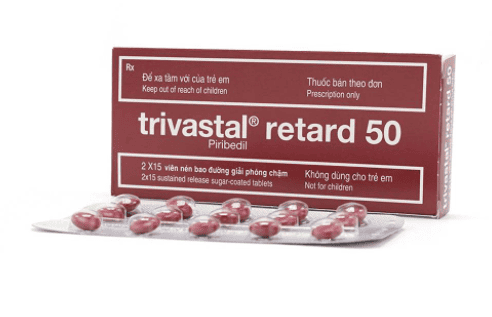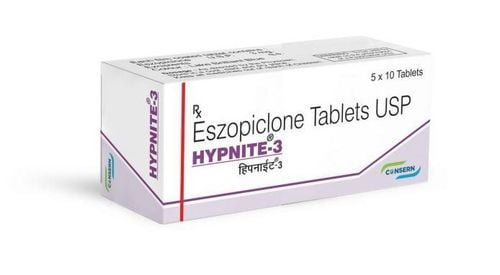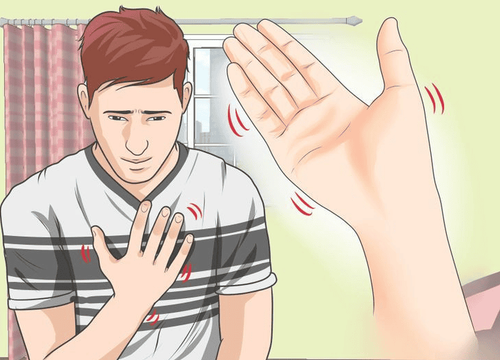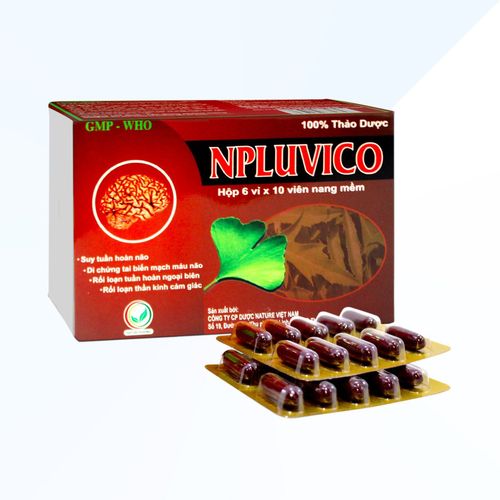This is an automatically translated article.
Posted by Master, Doctor Vu Duy Dung - Department of General Internal Medicine - Vinmec Times City International HospitalThere are now many treatment options for Parkinson's disease. Treatment options must target both motor and non-motor symptoms. Management of patients may vary depending on the severity and duration of the disease.
1. Treatment of Early Parkinson's Disease
Treatment of Parkinson's disease consists of a dopamine replacement strategy to improve disease symptoms, because current neuroprotective therapies are not effective. Patients should be prescribed dopaminergic therapy when their symptoms become bothersome and disruptive. There is no known benefit of withholding treatment for patients with disease symptoms.
When a patient is newly diagnosed with Parkinson's disease, it is important to determine that the symptoms are bothersome enough for the patient to permit treatment while also keeping an eye on nonmotor symptoms at all times. Factors considered were patient age, comorbidities, employment status, and other quality of life issues. For example, is the patient referred to a neurology clinic for a diagnosis, a consultation with another physician, or for symptomatic treatment?
Discussion of the treatment of early Parkinson's disease requires a brief overview of the controversies surrounding the initiation of levodopa in young patients. In fact, levodopa is a safe and effective medication for reversing symptoms for a period of time. Motor fluctuations and dyskinesia may be more closely related to long-term disease course and high daily doses of levodopa, rather than to duration of levodopa therapy. Rhythmic delivery of levodopa also contributes to dyskinesia. As the disease progresses, the disease will require higher and thicker doses of levodopa. As long as there is no clear evidence that levodopa causes cell death, symptomatic treatment should be initiated while also considering potential short-term and long-term side effects.
Dopamine agonists, MAO-B inhibitors, or anticholinergics may be initiated in Parkinson's patients younger than 70 years of age. However, non-levodopa agents will not be sufficient to effectively improve motor symptoms, and patients will need to be treated with levodopa (levodopa rescue).
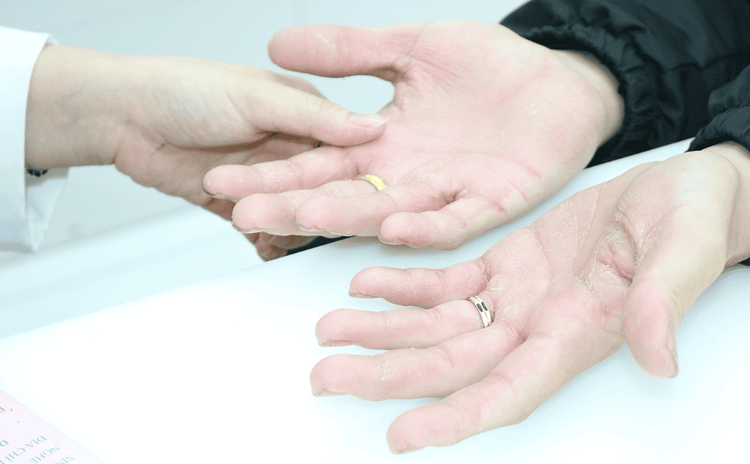
Dấu hiệu bệnh Parkinson giai đoạn sớm ở người trẻ tuổi
Treatment of young patients with levodopa should be considered if symptoms are bothersome enough to compromise quality of life. Younger patients may need better control of their symptoms with levodopa if they are still working or have other obligations such as caring for children or the elderly. Patients also may not receive optimal treatment with non-levodopa agents because of adverse side effects. Several studies suggest that initiating treatment with levodopa leads to better motor outcomes and better function in the long term. In elderly patients with signs of cognitive impairment, excessive daytime somnolence, or other comorbidities, it may be more reasonable to initiate treatment for Parkinson's disease with levodopa. Dopamine agonists, MAO-B inhibitors, and anticholinergics are more likely to cause cognitive adverse events in the elderly.
Exercise should be encouraged for all Parkinson's patients as long as it can be done safely. Some evidence suggests that long-term aerobic exercise may slow the progression of Parkinson's disease. Studies that confirm this hypothesis are underway. Exercise methods include axial strength training, tai chi, yoga, boxing, dance, and music therapy. Cognitive training with quizzes and computer games should also be encouraged.
2. Treatment of Advanced Parkinson's Disease
As Parkinson's disease progresses, decreased endogenous dopamine stores and release may result in a shortened duration of action of levodopa. The patient will experience a decrease in the effectiveness of the medication, namely the return of symptoms before the next dose of the drug, referring to predictable wearing off. The levodopa-induced motor fluctuations and dyskinesia begin to appear, and eventually there may be unpleasant dyskinesia for most of the time the patient is awake. Motor fluctuations can be caused by rhythmic stimulation of dopamine receptors. Stomach emptying problems as the disease progresses may further contribute to irregular absorption of the drug. Nonmotor fluctuations may also occur, including depression, fatigue, and anxiety.
The goal of Parkinson's disease treatment is to maximize the on time and reduce the off time, on the other hand, minimize the uncomfortable dyskinesia caused by levodopa. Time off can be treated by taking a thicker dose, using an extended-release form of levodopa, adding a COMT or MAO-B inhibitor, or adding a dopamine agonist to provide a drug response. more stable.

Một số loại thuốc được sử dụng trong điều trị bệnh Parkinson
3. Surgical treatment of Parkinson's disease
Surgical treatment of Parkinson's disease was developed for patients who, despite optimal medical therapy, have motor symptoms that have not been adequately improved by medication. A common surgical treatment is DBS (deep brain stimulation), which targets the hypothalamus, medial pallor, or medial ventral nucleus of the thalamus. DBS affects the modulation of electrical impulses in the brain using electrical stimulation from an electrical source implanted in the brain. It has been shown to improve tremor, dyskinesia, and motor fluctuations and has been used to treat thousands of Parkinson's patients worldwide.
DBS is a programmed technique, patient selection and precise implantation in the optimal location are the keys to surgical success. Many centers consider age 75 or slightly older as an appropriate upper limit. Most DBS techniques are performed about 10 years after diagnosis, but the EARLYSTIM (Controlled Trial of Deep Brain Stimulation in Early Parkinson's Patients) suggests that DBS may be used earlier. during the disease. DBS exclusion criteria included the presence of an atypical Parkinson's syndrome, unstable mental illness, progressive disease with significant dementia, and comorbidities that excluded candidates for surgery. , and advanced age. Eligible patients will undergo preoperative neuropsychiatric evaluation to assess suitability for surgery and estimate risk of cognitive impairment. The patient was also cleared of medical comorbidities and an MRI was performed to identify stroke, cerebral atrophy, or other abnormalities that might interfere with successful electrode placement.
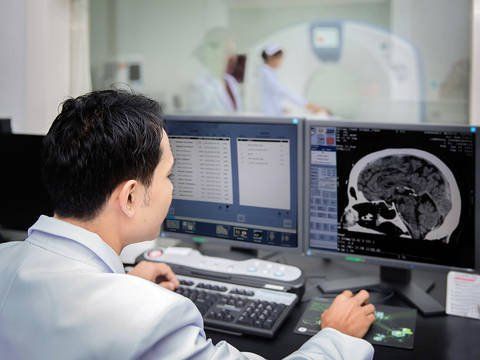
Người bệnh cần được chụp MRI giúp chẩn đoán chính xác bệnh lý
DBS surgery plans often have preoperative images including a brain MRI. Targets are defined according to the patient's specific anatomy (referred to as direct targeting) with or without consensus spatial coordinate reference established for each target (referred to as direct targeting). indirectly), and a route is planned to avoid vascular and other vital structures in the skull. Electrode placement can be further determined using microelectrodes with or without stimulus mapping. DBS electrodes are implanted into the appropriate target in the brain to cause a micro-injury, and an electrical pulse generator is implanted under the skin near the collarbone. Several weeks after surgery, when the micro-lesions had subsided, a pulse generator programmed with stimulation parameters was designed to deliver currents to the appropriate areas for symptom improvement. The patient returns to the nerve center or dyskinesia, where the frequency, voltage, and pulse width parameters will be configured to suit the patient's symptoms. Possible complications of DBS include medical problems such as myocardial infarction, pneumonia, deep vein thrombosis, pulmonary embolism, and surgical problems such as cerebral hematoma, stroke, and seizures. epilepsy, infection, and hardware dysfunction have all been reported in a small percentage of patients. Side effects include numbness, slurred speech, ataxia, and affective dysregulation, which are usually reversible and ameliorated by altering stimulus parameters.
Source: Theresa A. Zesiewicz. Parkinson's Disease. Continuum (Minneap Minn) 2019;25(4, Movement Disorders): 896-918.
SEE MORE DOCUMENTS ON PARKINSON'S DISEASE OF DOCTOR VO DUONG:
Outline of Parkinson's Disease Clinical Symptoms of Parkinson's Disease Diagnosis of Parkinson's Disease Causes, diagnostic imaging and grading scales of Parkinson's patients Parkinson's disease medicine Parkinson's disease treatment Outpatient visit for Parkinson's disease





